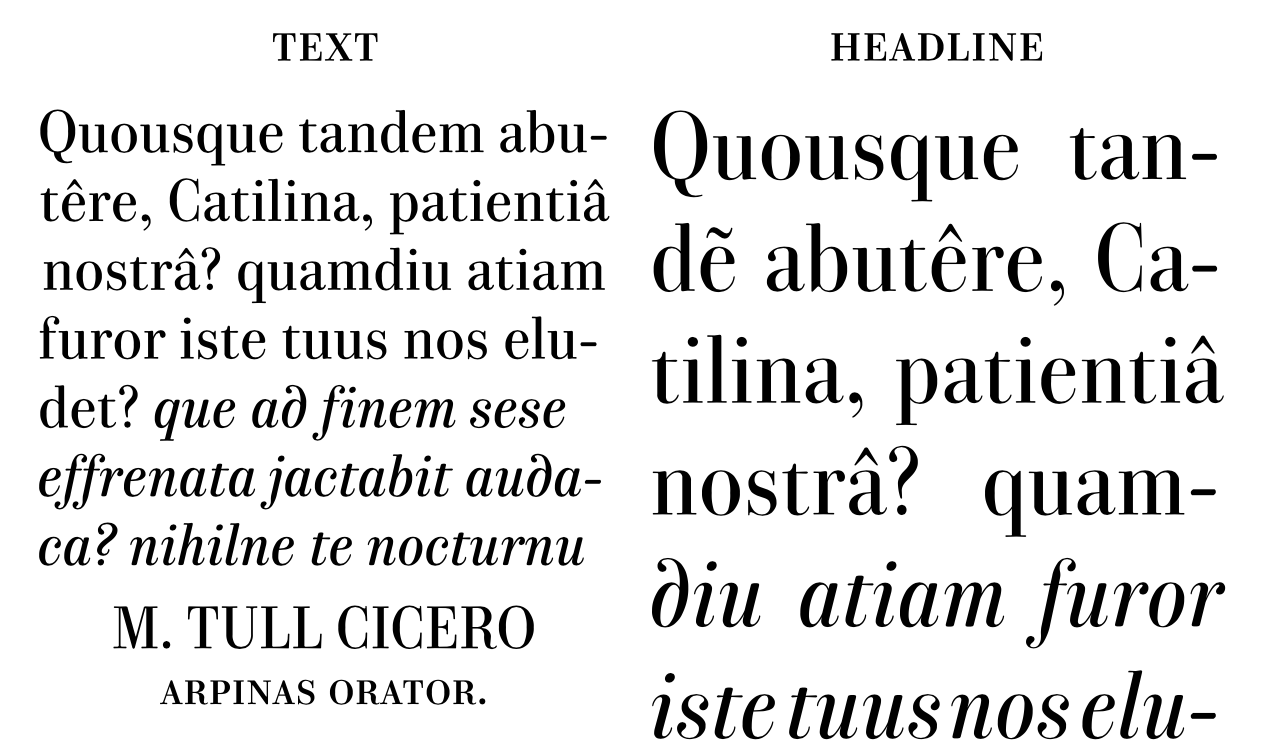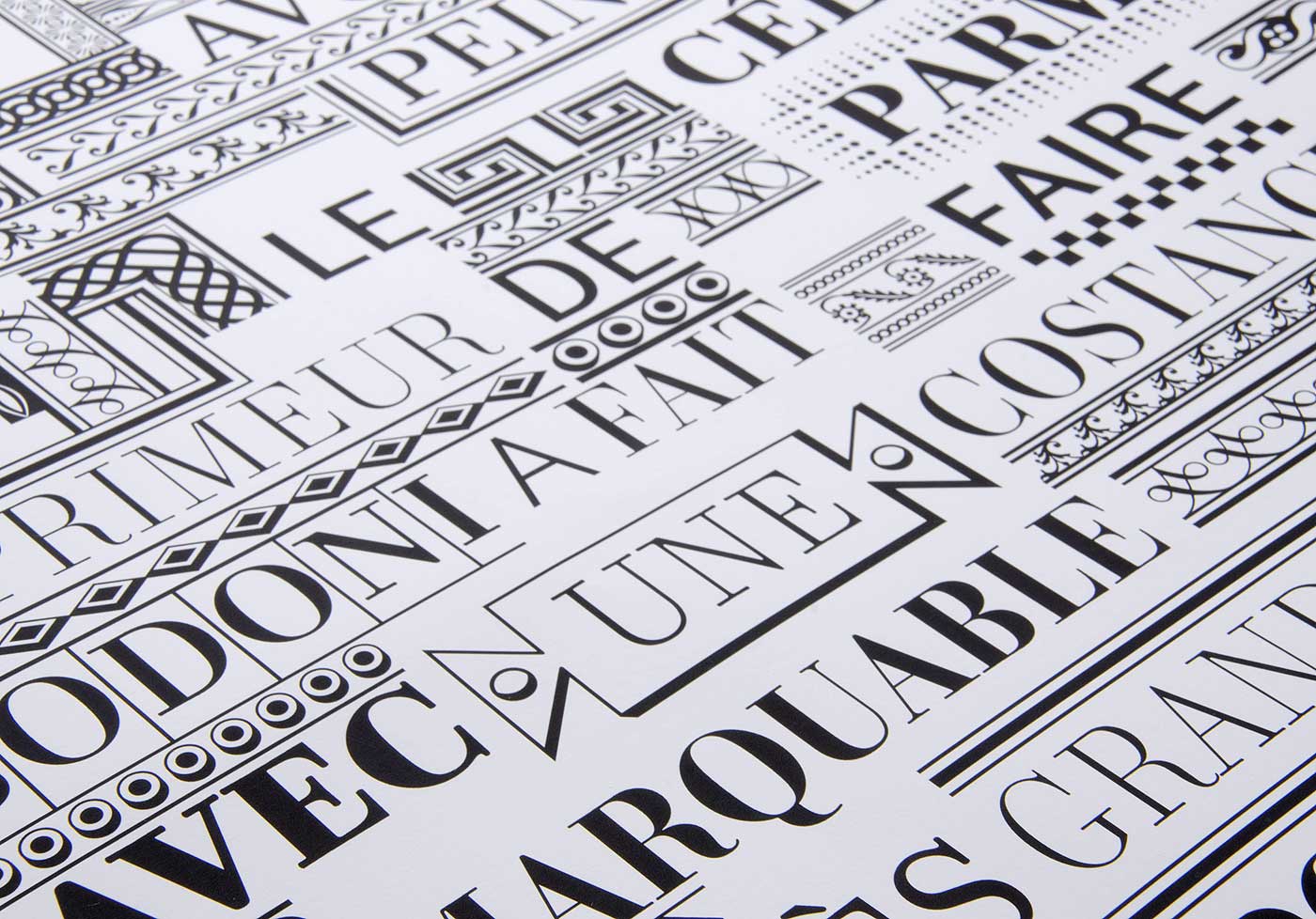Parmigiano Typographic System

Motion design by Vít Zemčík
Giambattista Bodoni (1740–1813) was the most prolific type designer in history, producing 142 Romans, 34 Greeks and 21 Cyrillics, as well as italics, non-Latin typefaces, music notation, and thousands of lines and borders. In Manuale Tipografico, the 1840 inventory compiled by his widow, his typographic material comprised 25,491 punches and 50,283 matrices. To the best of our knowledge, however, no one has ever assembled a definitive catalogue of his work.

1 Garamoncino 1, Como, page 19 (circa 7 pt), 2 Garamone 4, Pavia, p. 31 (ca. 9 pt), 3 Lettura 8, Mirandola, p. 55 (ca. 11 pt), 4 Silvio 1, Pisa, p. 58 (ca. 13 pt), 5 Silvio 8, Fermo, p. 65 (ca. 13 pt), 6 Testo 1, Reggio, p. 81 (ca. 16 pt), 7 Testo 10, Urbino, p. 90 (ca. 17 pt), 8 Palestina 4, Roano, p. 116 (ca. 27 pt), 9 Ducale 2, Bitonto, p. 137 (ca. 39 pt), 10 Imperiale Tondo, p. 141 (ca. 50 pt)
Given the profuse number of styles Bodoni cut, it is illusory to talk of a single Bodoni design. There are significant differences in proportions, shapes, and details between his various Roman styles, for example. The idea most designers have of Bodoni is based on the early 20th century revivals, which were the first typefaces to be named after him.

Now, over 200 years later, Riccardo Olocco and Jonathan Pierini are reinterpreting Bodoni's work for modern use. Their Parmigiano Typographic System (named after Parma, the city where Bodoni established his printing house) has the stated ambition to be the most extensive family of fonts ever to have been inspired by this great designer. Their biggest challenge was to create coherent relationships between various optical sizes (Piccolo, Caption, Text, Headline) and weights, something that Bodoni himself didn’t concern himself with much.

PDF of Parmigiano Serif, PDF of Parmigiano Sans
The project started with a thorough analysis of the Manuale, yet Parmigiano goes beyond it to imagine what would Bodoni have done if he had worked with digital media. The authors consider Parmigiano an 'irreverent descendant’ of Bodoni’s work rather than a revival, as it includes styles (e.g. Sans) that Bodoni never created or even considered creating.

Compulsive Bodoni is the name of the on-going project that publicizes the ideas of the Parmigiano Typographic System. It introduces the font system and is following its development with a series of multidisciplinary events and exhibitions. Read about the process of designing Parmigiano.

Design by Paolo Palma